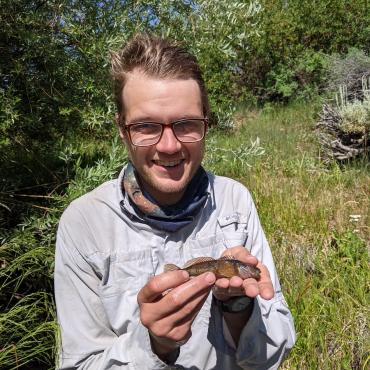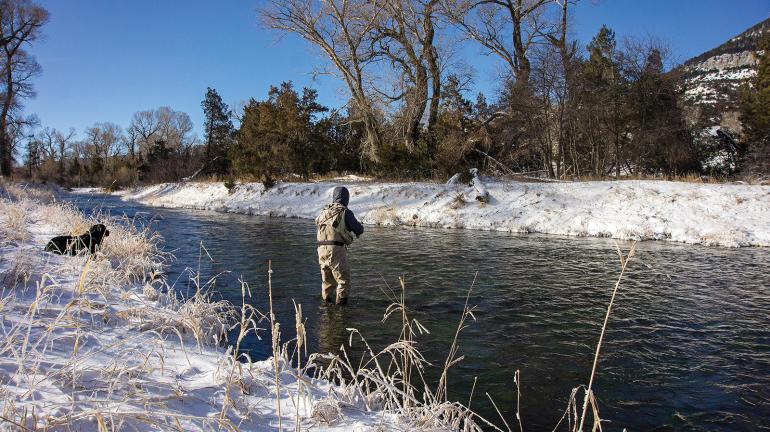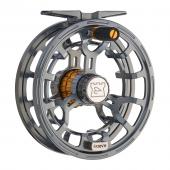Casting a Frozen Line
The difficulties of fishing in winter.
As most semi-experienced anglers know, fly fishing in the winter is often difficult, miserable, and occasionally dangerous. You have to deal with your guides freezing up, trying to stay warm, trudging through deep snow, and the inactivity of the fish. Yet, many of us find it impossible to go an entire winter season without at least throwing a few flies here and there.
In one of my recent and rather ill-conceived ventures of the sort, I discovered some unique challenges to fishing smaller streams in winter. In Montana, the Western District is closed to fishing rivers and streams during winter. But, east of the Continental Divide—that’s us, Bozeman and the surrounding area—smaller rivers and their forks are often suited for anglers looking for some solitary time on the water.
When you do find that rare patch of open water, you want to fish it immediately instead of mucking around for insects.
These waterways will likely be frozen over in many places, leaving holes and large pools as the only open water. While this is a condition more intelligent anglers would quickly designate as unfit for fishing, I sometimes take advantage of the situation, walking across the ice to approach the best unfrozen water. However, I have found that when casting to an area of water with ice between you and the stream, your line hangs over the edge of the ice. When you try to pull back for another cast, your fly often catches on the jagged ice. You can usually manage to get it back by pulling at a few different angles, but sometimes it’s necessary to break off your line and tie a new fly on... which can be a struggle with cold, clumsy fingers.
Another difficulty occurs when trying to choose which fly to get stuck in the ice. If you’re like me and often roll over a few rocks, observing the insects crawling around and trying to “match the hatch,” small winter streams can confound you. When you do find that rare patch of open water, you want to fish it immediately instead of mucking around for insects. What I would recommend in this instance is to start out with an attractor nymph such as a copper john, rubber legs, hare’s ear, or batman nymph. I always start with my personal creation: a mix between a red copper john and batman nymph I call the ‘batman beyond’ (see below). Then, after fishing your first couple of holes, if you haven’t seen any success, go ahead and turn over a few rocks.
One of my go-to flies is based on the net-building caddisfly of the family Hydropsychidae. These unique caddisflies don’t build cases like many others, but spin nets like underwater spiders. They can be replicated very easily by tying a European-style pattern in a few different colors (see below). This is great for those times when you get your fly stuck in the ice, knowing that losing the fly costs little time or money to replace.
In addition to these extra challenges, don’t forget to prepare as you would for any winter trip. A few things to include: hand- and toe-warmers, a thermos of coffee, and a Tenkara rod (eliminates the problem of freezing guides).
Here are a couple of my favorite winter patterns.
The Batman Beyond
Hook: Dai-Riki #060 or similar nymph hook, sizes 10 to 14
Thread: Black 6/0
Bead: Dark nickel
Legs: Black rubber legs
Thorax: Black or dark brown rabbit dubbing
Abdomen: UTC “brassie size” red wire
Tail: Dark moose body
Hydropsychid Caddis
Hook: Dai-Riki #135 or similar curve-shanked hook, sizes 12 and 14
Thread: Black or olive 6/0
Bead: Gold
Body: Olive rabbit dubbing
Back: Hareline Dubbin 1/8” clear scud back
Segmentation: UTC medium olive wire
Niall Clancy is a fifth-generation Montanan and avid fan of tangling line in bushes. He graduated from MSU and is working on a PhD in fisheries science.














